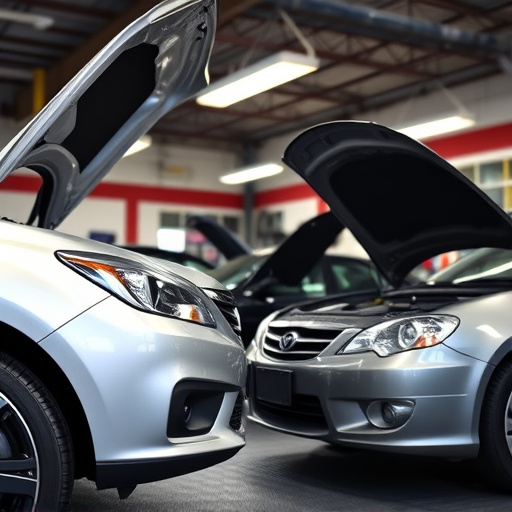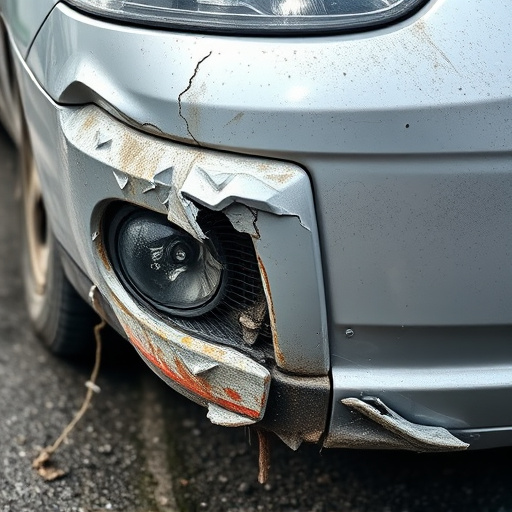Tesla electrical repairs require specialized tools and techniques due to environmental vulnerabilities and complex systems. Common issues include connectors, wires, and control modules, which demand advanced diagnostic tools and paintless dent repair methods. Safety protocols, including protective gear and de-energized sources, are vital. Repairs follow a methodical process: diagnose, safely discharge energy, isolate issues, replace components with genuine Tesla parts, test functionality, ensuring optimal performance and driver safety.
Unraveling the intricacies of Tesla electrical repair is a crucial step for both owners and technicians. This comprehensive guide aims to demystify common issues and provide a structured approach to troubleshooting. From identifying short circuits and power control module malfunctions to understanding safety protocols, this article covers essential aspects. Learn about specialized tools, follow a step-by-step process, and gain valuable insights into basic Tesla electrical repairs, empowering you to navigate potential challenges with confidence.
- Identifying Common Tesla Electrical Issues
- Tools and Safety Precautions for Repair
- Step-by-Step Guide to Basic Electrical Repairs
Identifying Common Tesla Electrical Issues

Tesla electrical systems, like any complex network, can encounter various issues over time. Identifying common problems is the first step in efficient Tesla electrical repair. Some recurring issues include faulty connectors, worn-out wires, and malfunctioning control modules. These challenges often stem from environmental factors such as extreme temperatures, moisture intrusion, or constant vibrations. For instance, a simple car dent removal method can cause unintended damage if not performed correctly, leading to short circuits or power outages in the vehicle’s electrical system.
Technicians specializing in Tesla electrical repair need to be adept at troubleshooting these issues. They employ advanced diagnostic tools to identify problem areas and use specialized techniques for repairs. Interestingly, methods like paintless dent repair, while primarily focused on cosmetic restoration, can also indirectly contribute to maintaining the integrity of a Tesla’s electrical components by minimizing invasive modifications that could potentially disrupt the delicate balance of the vehicle’s electronics.
Tools and Safety Precautions for Repair

When tackling Tesla electrical repairs, having the right tools is paramount. While basic automotive repair tools are essential, specialized equipment tailored for electric vehicles (EVs) is crucial. This includes high-quality diagnostic scanners compatible with Tesla systems, as well as tools designed for handling lithium-ion batteries safely and efficiently. A proper Tesla collision repair often requires a nuanced approach, given the complex electrical systems involved. Therefore, invest in reliable and up-to-date tools that can navigate these intricacies.
Safety is paramount when engaging in any Tesla electrical repair procedure. Mechanics should always wear protective gear, including insulated gloves and safety glasses. Additionally, ensuring proper ventilation during work is critical due to potential chemical exposure. Given the high voltage involved, a grounded workspace and de-energized power sources are non-negotiable. Regular training on EV safety protocols and adhering to manufacturer guidelines will prevent accidents and ensure effective collision repair services for Tesla vehicles.
Step-by-Step Guide to Basic Electrical Repairs

When it comes to Tesla electrical repairs, understanding a step-by-step guide is crucial for both owners and professionals alike. The process typically begins with identifying the issue—whether it’s a faulty battery connection or a malfunctioning power supply. Once diagnosed, the repairer can proceed with confidence. They’ll start by discharging any residual energy in the system to ensure safety, then isolate the problem area using appropriate tools and techniques.
The next phase involves replacing defective components, such as damaged wires or corroded connectors. It’s important to use genuine Tesla replacement parts to maintain the vehicle’s performance and efficiency. After careful installation, a final test is conducted to verify the repair. This may include checking voltage levels, current flow, and overall system functionality. If all checks out, the car can then move on from the auto collision center or tire services department, ready for the road again, with its electrical systems restored to optimal condition, ensuring a seamless driving experience without any concerns regarding car bodywork issues.
In conclusion, understanding the basics of Tesla electrical repair procedures is crucial for anyone looking to address common issues efficiently. By identifying problem areas, adhering to safety precautions, and following a structured guide, you can confidently tackle basic electrical repairs on your Tesla. Armed with the right tools and knowledge, you’ll not only save time and money but also enhance your overall ownership experience. Remember, when it comes to Tesla electrical repair, proper understanding and careful navigation are key.














